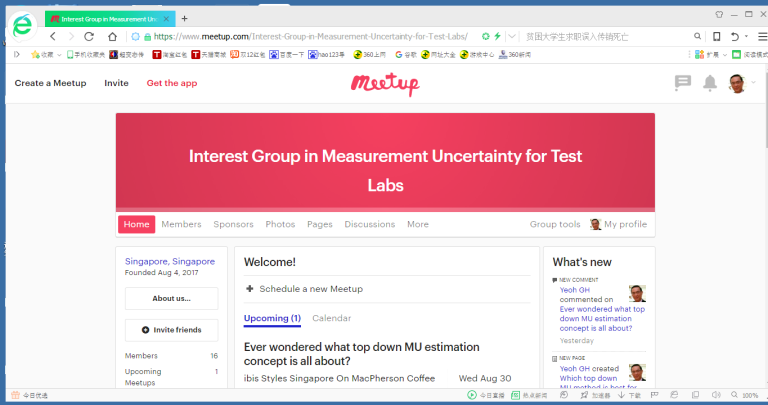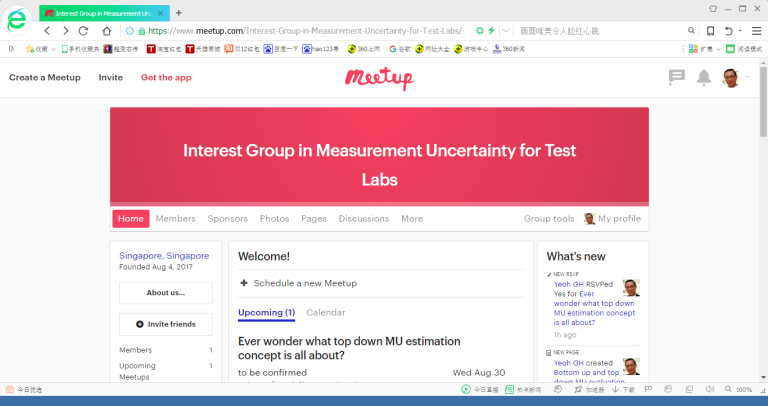


Our Meetup.com website has now got 16 members registered for Interest Group in Measurement Uncertainty for Test Labs since its formation on August 4 to foster fellowship and interaction on how to implement this important requirement in the ISO/IEC 17025 laboratory accreditation standards. New members are most welcome. Click hhtp://www.meetup.com/Interest-Group-in-Measrement-Uncertainty-for-test-labs/
Category:

There are several alternative top down methods available for the estimation of measurement uncertainty (MU) in chemical and microbiological laboratories. One or two will work best under your laboratory conditions.
All accredited laboratories would have implemented a robust laboratory quality management system in accordance to the ISO/IEC 17025 standards. In this scenario, you would have carried out certain method validation and verification on your in-house test methods and standard/official methods, respectively. You would also have consistently been running laboratory control samples (LCS’s) as and when you conduct a batch of sample analysis to monitor the accuracy of your test results. Similarly, you should also have been participating some proficiency testing (PT) programs at regular intervals as required by the national accreditation body.
An important inference from this illustration is that in designing experiments, it is best to include all variables, or all factors, in each trial for the same number of repeats in order to achieve improved precision.
With this in mind, I recommend the following top down approaches which will be suitable for your MU evaluation:
In my opinion, the ISO 11095 method in (d) is the most difficult one for a laboratory analyst who has acquired only elementary statistical skills, because of its application of more complicated statistical tools in estimating the constant and proportional variances. The other approaches are quite straight forward and will be easily appreciated by the analysts with average statistical knowledge.

Yeoh GH of GLP Consulting has at the hhtp://www.meetup.com website set up a chat group, namely Interest Group in Measurement Uncertainty for Test Labs better interaction with the laboratory and QA personnel in this region.
The very first Meetup session is scheduled on August 30 in Singapore with venue to be confirmed later. All are welcome to join this interest group at https://www.meetup.com/Interest-Group-in-Measurement-Uncertainty-for-Test-Labs/ even though you might not be in Singapore as we shall post summaries of discussions and useful pointers after the meetup.
